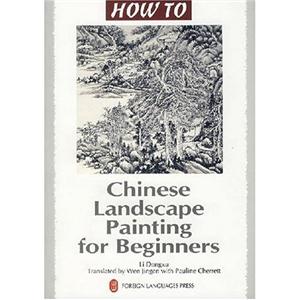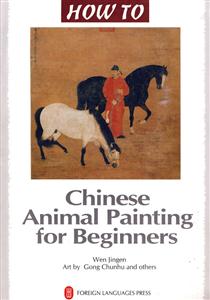
作者:Acriticalstudyby
页数:74
出版社:五洲传播出版社
出版日期:2018
ISBN:9787508539195
电子书格式:pdf/epub/txt
内容简介
《中国画家》主体分为两部分,简明扼要地概括了中国古代绘画的发展和主要特征。作者首先介绍了中国绘画的技巧和手法,包括绘画工具的使用、表现形式、主题类别和灵感来源等。第二部分按时间顺序介绍了中国绘画的发展演变,以及各个时期涌现出的代表人物。
The “China Yesterday” series include a few Sinological and biographical works on the topics of Chinese history, literature, society, etc. All these works were written by foreigners and shed light on China in unique perspectives.
Chinese Painters mainly includes two parts, which concisely summarize the history and characteristics of Chinese painting. The first part talks about the technique of Chinese painting, involving equipment, representation of forms, subjects, and inspiration. The second part introduces the evolution of Chinese painting in a chronological order, and emphasized many famous painters emerged in different periods.
作者简介
拉斐尔·佩初兹(Raphael Petrucci,1872—1917),法国优秀的汉学家之一,儒莲奖(“汉学界的诺贝尔奖”)获得者。
Raphael Petrucci (1872–1917), one of the best Sinologists of France, and winner of the Stanislas Julien Prize.
本书特色
《中国画家》对于西方读者快速了解中国绘画很有实用意义。
Chinese Painters is a short book which is very useful for Western readers to quickly understand Chinese painting.
目录
BIOGRAPHICAL NOTE
INTRODUCTION
PART ONE. TECHNIQUE
I. EQUIPMENT OF THE PAINTER
II. REPRESENTATION OF FORMS
III. DIVISION OF SUBJECTS
IV. INSPIRATION
PART TWO. THE EVOLUTION OF CHINESE PAINTING
I. ORIGINS
II. BEFORE THE INTERVENTION OF BUDDHISM
III. THE INTERVENTION OF BUDDHISM
IV. THE T‘ANG PERIOD—SEVENTH TO TENTH CENTURIES
V. THE SUNG PERIOD—TENTH TO THIRTEENTH CENTURIES
VI. THE YÜAN PERIOD—THIRTEENTH AND FOURTEENTH CENTURIES
VII. THE MING PERIOD—FOUR TEENTH TO SEVENTEENTH CENTURIES
VIII. THE CH‘ING PERIOD—SEVENTEENTH TO TWENTIETH CENTURIES
CONCLUSION
BIBLIOGRA PHY
INDEX OF PAINTERS AND PERIODS
节选
The aesthetic conceptions of the Far East have been deeply influenced by a special philosophy of nature. The Chinese consider the relation of the two principles, male and female, the yang and the yin, as the source of the universe. Detached from the primordial unity, they give birth to the forms of this world by ever varying degrees of combination. Heaven corresponds to the male principle, earth to the female principle. Everything upon the earth, beings, plants, animals or man is formed by the mingling of yang and yin. While the mountain, enveloped in mists, recalls the union of these two principles, the legend of forces thus revealed by no means pauses here. Fabulous or real, the animals and plants habitually seen in Chinese paintings express a like conception.
The dragon is the ancestor of everything that bears feathers or scales. He represents the element of water, the waters of the earth, the mists of the air, the heavenly principle. He is seen breaking through the clouds like some monstrous apparition, unveiling for an instant the greatness of a mystery barely discerned. The tiger is the symbol of the earthly principle, a personification of quadrupeds as distinct from birds and reptiles. His ferocious form lurks in the tempest. Defying the hurricane which bends the bamboos and uproots trees, he challenges the furies of nature that are hostile to the expression of the universal soul. The bamboo is the symbol of wisdom, the pine is the emblem of will-power and life. The plum tree in flower is a harmonious combination of the two principles. It symbolizes virginal purity.















